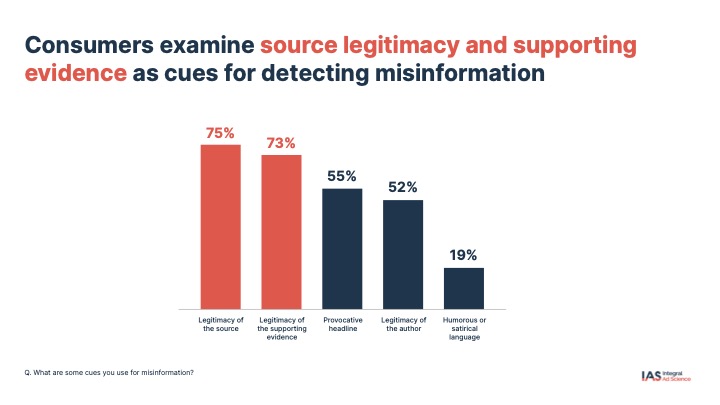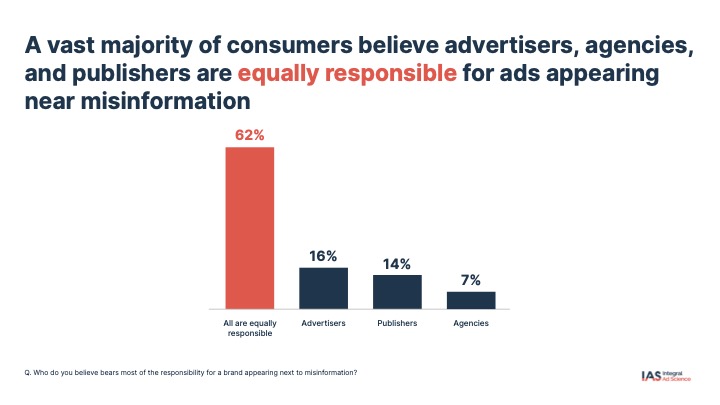
We’re moving into a user-first era. These days, consumers’ concerns are becoming more of a priority for buyers and sellers alike, and they’re doing all they can to keep people happy and spending their money.
We’re seeing this with the many consumer data privacy regulations that are being passed globally, as well as with big tech updates like Apple’s ATT and Google’s Privacy Sandbox. User consent is now a top priority in how the industry moves forward. But people don’t only want to make decisions about who they share their data with and how they use it, they also want more say in what content they’re served, including advertising.
Conversations about balancing user experience and revenue are even changing tone, as publishers are doing a lot more to keep people on their site and coming back for return visits.
Consumer perception is of great value in the advertising ecosystem and it means everything. That’s why ad quality and brand safety should be just as important as how privacy and user experience are viewed — ultimately they all intersect.
In a recent study by Integral Ad Science: Advertising in the Age of Misinformation: How Consumer Perception of Misleading Content Impacts Brand Favorability, 42% of industry experts are concerned about the repetitional impact of their ads being placed alongside misleading content and the potential impact of future buying amongst these same consumers. And, 73% of media experts are in unison that buyers and sellers must do everything in their power to avoid misinformation.
It’s great to hear what experts think, but isn’t it time we learn more about how consumers feel about this issue?
Misinformation: The Consumer Perspective
People use digital devices to consume media more than we can realistically calculate. In fact, 74% of consumers check their digital media outlets multiple times a day on their smart devices, and 80% of them see misinformation as a massive bump in the road to connecting with digital media. Frighteningly, a whopping 71% of consumers say they regularly stumble across misleading digital content when surfing the web.
Additionally, 62% of consumers think advertisers, agencies, and publishers are equally responsible for ads appearing near misinformation. It’s clear that consumers have had enough, and if this issue is not quickly reconciled it will harm brand perception and revenue for advertisers, as well as monetization for publishers. Sixty-five percent of consumers disclosed that they would likely stop buying from a brand that advertises alongside wonky content.
But it’s not all doom and gloom. There is hope, as the report found that 67% of consumers agreed that brands could redeem themselves as long as they actively denounce misinformation. When brands step up in this way, consumers can still view them positively. In turn, brands earn brownie points toward saving their reputations.
We all know, that no one will not spend their money on a brand they don’t trust. For this reason, advertisers and publishers should do all they can to eliminate misinformation on the web. Doing so will only help to influence purchasing decisions positively.
Content is still king; that is never changing, and we see it firsthand in this report. Fifty-one percent of consumers expressed that online content adjacency influences their trust in a brand, and 69% acknowledged that the level of trust influences whether or not they will use a brand’s goods and services.
Surprisingly, 91% of consumers feel confident in their ability to detect misinformation, and they will point out every instance. Yes, cancel culture still exists, even for brands.
So, isn’t it time the industry makes the much-needed adjustments to address misinformation?
How Can Buyers and Sellers Combat Misinformation?
We must protect brand safety at all costs.
When obstructed, it can significantly tarnish an advertiser’s reputation. To solve the issue, brands and their media agencies turn to keyword blocklists. But that doesn’t always solve the problem, as legit publishers who provide essential content might get blocked and end up losing out on ad revenue.
That’s why the industry is working on a range of tools to combat this issue.
For instance, IAS partnered with the Global Disinformation Index (GDI) to give advertisers enhanced misinformation protection. With IAS’s expanded global coverage, they can detect more sources of misinformation, ensuring a larger spectrum of security for digital campaigns.
This coverage is available across the open web for pre-, and post-bid media buys and can be accessed via IAS’s Brand Safety Offensive Language & Controversial Content category.
Also, video advertising platform, Unruly, pledged to shield its advertisers with tools from NewsGuard, a company that rates news sources for credibility and transparency. NewsGuard works with advertisers, agencies, and ad tech companies to help brands dodge ad placements on sites with misinformation and direct their ads to trustworthy news and information publishers.
Thankfully for publishers, this NewsGuard’s tool includes a benchmark created by a team of seasoned journalists, where brands can use the journalistic criteria to evaluate each publisher’s credibility and transparency practices.
Just like traditional keyword blocklists, tools like these — that mitigate the risks of a brand’s campaign appearing next to hate speech or fake news — always make a huge difference, but they need to have lots of flexibility built in to ensure that content is flagged appropriately and that deserving publishers don’t lose out on revenue.
Regardless of which solution brands select, it’s important to note that the consumer has spoken and will continue to be vocal about issues like privacy and misinformation. At the end of the day, misinformation negatively impacts consumers, buyers, and sellers, so the industry should continue doing all it can to put death to it.

